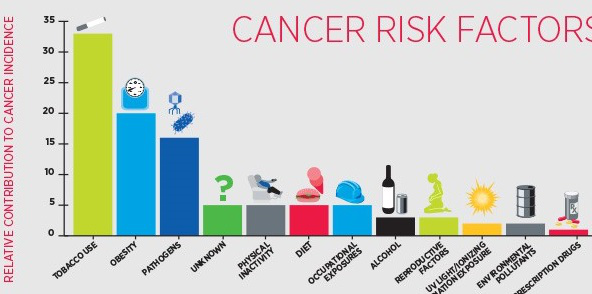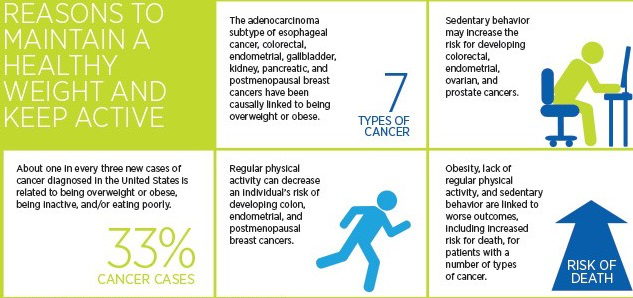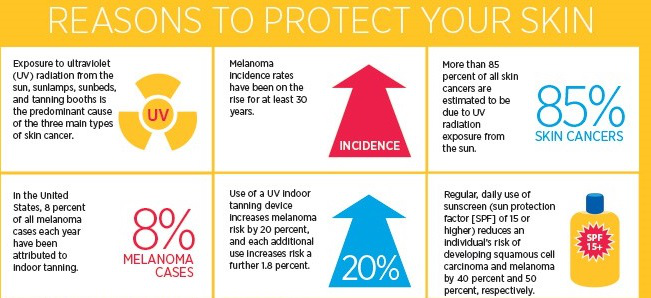Methods to avoid or control factors known to cause cancer
Cancer Prevention
It is estimated that more than half of the estimated 600,920 cancer deaths that occurred in the United States in 2017 were related to preventable causes, including tobacco use, obesity, exposure to ultraviolet light, and vaccine-preventable infections with cancer-associated pathogens.

Advancing the science of cancer prevention. We work with a wide range of partners in biomedical research to develop strategies and promising therapeutics to stop cancer before it starts.
Our eight peer-reviewed medical journals including Cancer Epidemiology, Biomarkers & Prevention and Cancer Prevention Research feature leading-edge research in the field.
Adopting healthy lifestyles that eliminate or reduce the risk of recognized causes of cancer, could decrease the number of people diagnosed with many types of the disease. Moreover, healthy approaches to living can reduce the risk of cancer recurrences and improve outcomes during treatment.
Smoking causes about 30 percent of all U.S. deaths from cancer. Avoiding tobacco use is the single most important step we can take to reduce the burden of cancer.
Poor diet, lack of physical activity, and obesity/overweight are known risk factors for many chronic diseases and conditions and are estimated to account for 25 percent to 30 percent of cancers in the U.S.

The relationship between diet and cancer is complex. Because people consume a variety of foods that keep changing every day, the contribution of a specific type of food or food component in preventing a type of cancer is difficult to determine.
Exposure to ultraviolet (UV) light from the sun or indoor tanning is the predominant cause of all three main types of skin cancer – basal cell carcinoma, squamous cell carcinoma, and melanoma. Adopting sun-safe habits and avoiding the use of indoor tanning devices can decrease the incidence of skin cancer.

Infections with cancer-related pathogens account for about one in five cancer diagnoses worldwide and taking measures to prevent and treat these infections can help prevent certain cancers.
Screening for Cancer Prevention
Screening for colorectal cancer, the second leading cause of cancer death in the U.S., by colonoscopy can both detect these cancers at an early stage, when successful treatment is more likely, and prevent them from developing in the first place. That's because precancerous polyps found by colonoscopy can be removed during the procedure, thus preventing them from going on to become cancers.
If everyone followed colorectal cancer screening guidelines, at least 60 percent of U.S. colorectal cancer deaths could be avoided. Unfortunately, it is estimated that one in every three U.S. adults is not getting screened as recommended.
Similarly, Pap test screening for cervical cancer, which will be diagnosed in more than 12,990 U.S. women in 2016, can both detect cancer at an early stage, when treatment outcomes tend to be better and detect precancerous abnormalities, which can then be treated to prevent them developing into cancers.

Enhancing Cancer Prevention
Scientists are studying many different ways to prevent cancer, including:
Methods to avoid or control factors known to cause cancer
New ways to detect precancerous conditions sooner
Chemoprevention, medicines to treat precancerous conditions or to keep cancer from ever developing.
For more information about cancer research join 12th World Cancer Congress at Moscow, Russia during July 23-25, 2018.
Link: https://goo.gl/HXAGc2
Comments
Post a Comment